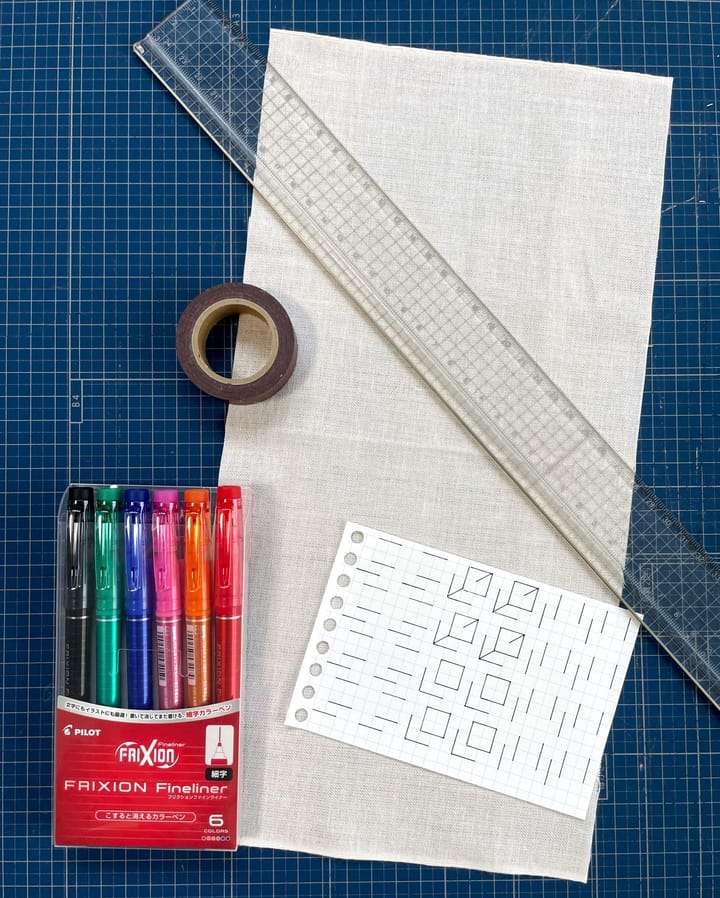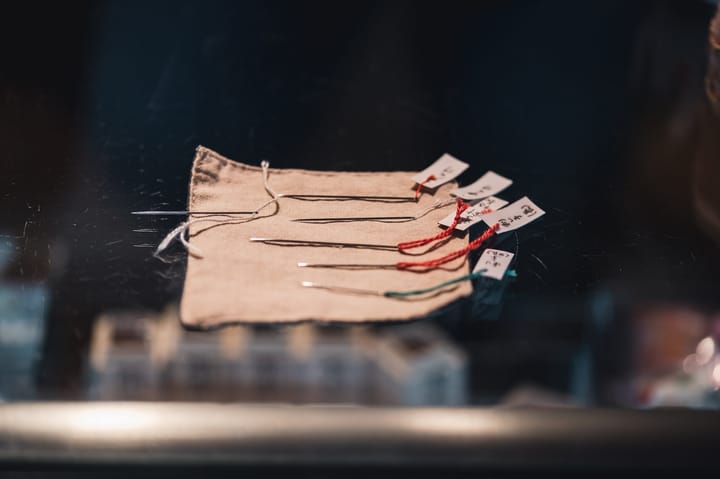How to treat new fabric for sashiko
Doing sashiko on new fabric? | Treat your fabric properly for the best stitching result

If you are doing sashiko to mend your favorite pair of jeans or sweater, the fabric has probably been washed many times. So there is no special treatment needed before you start stitching. Hooray!
But if you stitch on new fabric, you may achieve a better result if you wash, dry, and iron it beforehand.
How to treat new cotton fabric before you do sashiko
Modern sashiko fans in Japan often use 晒し sarashi, bleached cotton fabric with a width of about 35cm. This fabric is white and stiff because of its chemical treatment. It has a rough weave and can be easily pierced even with bigger sashiko needles. Because it is a very durable fabric that gets softer with use, it is a perfect canvas for your sashiko pattern!
The necessary treatment
Even if you don't use sarashi, you may still profit from treating your fabric in the following way before doing sashiko:
Soak, wash, and iron your fabric before you start stitching. Washing and ironing are enough to reap the benefits of comfy stitching. But if you want to achieve a result that doesn't throw any waves, I advise you to let your fabric soak for an hour or two.
Be careful if you use a fabric that gets its color from botanical dye. In this case, I would always choose a wavy outcome over a discolored one. But that is a decision that you will have to form on your own.
Effect of the treatment on the stitching process
Depending on its treatment, cotton can be quite stiff, which makes it a little difficult to stitch. To avoid this, just wash the fabric once to make it more workable.
Effect of the treatment on the result
Also, the fabric shrinks slightly when washed for the first time, which can alter the appearance of the stitching. So after the finished sashiko dries, it will be wavier than sashiko on pre-washed cloth and it will also take more time to iron all the waves out. Even after ironing, the fabric will be wavier than a pre-washed one.
Even though I don't mind the wavy outcome, I enjoy stitching on washed cloth much more, because the needle will pass through the fibers more easily.
So I tend to wash my fabric, all the while oppressing the urge to start stitching right away.
Before you do sashiko on new linen fabric
The necessary treatment
Even though linen fabric dries very quickly, it is rather vulnerable while wet, so make sure you are gentle when you wash it. Avoid soaking for any longer than ten minutes, otherwise the fibers will weaken and eventually be damaged.
Effect of the treatment on the stitching process
Linen fabric is normally soft, even when new. So unless the fabric you have is stiff for some reason, there is no need to wash it to improve its workability.
Still, some fabrics are treated with starch keep them wrinkle-free. In this case it is best to wash the starch off to make it easier for the needle to pass through.
Effect of the treatment on the result
Linen fabric shrinks while wet and will return to its original size while it dries. Overdrying and washing linen with hot water will not only cause it to permanently shrink, but will also damage its fibers.
As long as you avoid excessive heat, excessive soaking, and overdrying your fabric, it should not shrink. Even if it does, because the fabric is so soft, the waves won't stand out in comparison to the waves cotton creates.
That means that no matter whether or not you wash your linen fabric before prettying it up with sashiko, it will look perfect afterward!
Before you do sashiko on other new fabric
Consider the advice for cotton and linen fabric above and decide whether your fabric may need to be soaked, washed, or ironed before stitching.
It's always better to be on the safe side. Treating the fabric wrong once may ruin it, but treating it overly gentle won't do it any harm.
If you think there is no need pre-wash the fabric, don't waste any more time and get to stitching!
Need sashiko pattern ideas?
Washing sashiko
When you've finally finished your project, make sure you wash it correctly. I've put all the information in another article to make sure your sashiko gets the right washing treatment no matter which materials you've used!
Have fun!





Comments ()